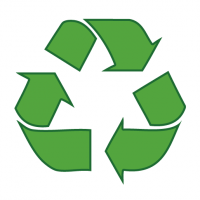Promoting Sustainable Test Automation

When I talk about sustainable test automation, I think about people and processes—not about individual products, or epic deadlines. I think about the test automation success stories that span years—not iterations.
Historically, over the span of years, we are not building or testing the same kinds of products, and we are not using the same tools to test these different products. Times change. Tools change. Yet, the problems we face remain the same.
Now, imagine you have five testing teams. Each of them uses different testing frameworks because the applications are vastly different: web, Java, Flex, Android, Apple iOS, plug-ins, add-ins ... As a team manager, your hands seem tied! You dare not move your testers around because the learning curve each will face is entirely counterproductive. They are trapped in application-specific silos.
Truly sustainable test automation imparts minimal impact on people and processes over the course of years. It is achieved by deploying automation frameworks that shield testers and processes from the automation tools and technologies that are constantly evolving.
These frameworks help testers by separating test design and development from the automation tools that will execute them. These frameworks also protect processes by providing the outputs they need despite the parade of new tools.
We can define how we write tests.
We can decide the language used to write those tests.
We can control the resulting output to fit our existing processes.
When we do that, then people and processes can focus on testing—and results. It frees testers (and test managers) to share and leverage their expertise across the entire enterprise. They can even get help from outside the company. Imagine Java app testers, Office Addin testers, and web client testers helping each other because everything about how they develop and execute tests is the same!
These ideals were true back at the turn of the century. They are still true today. The difference between then and now is that there are available solutions.
Back then, there were very few options. We either had to buy a commercial solution or roll our own. And because automated testing was not as high on the budgeted list back then, the commercial solutions were often deemed too expensive, and the roll-your-own endeavor was usually considered impractical.
Since then, more automation framework solutions—including open source projects like those from SAFSDEV—have come along and proven themselves over time. Extensible, service-oriented frameworks like these have given us truly sustainable test automation options. The value of these frameworks may not be readily apparent with our first automation project, but as we move forward through time and technologies, the real value becomes ubiquitous.
Carl Nagle will be presenting his session Fostering Long-Term Test Automation Success at Better Software Conference East 2015, from November 8–13 in Orlando, Florida.

